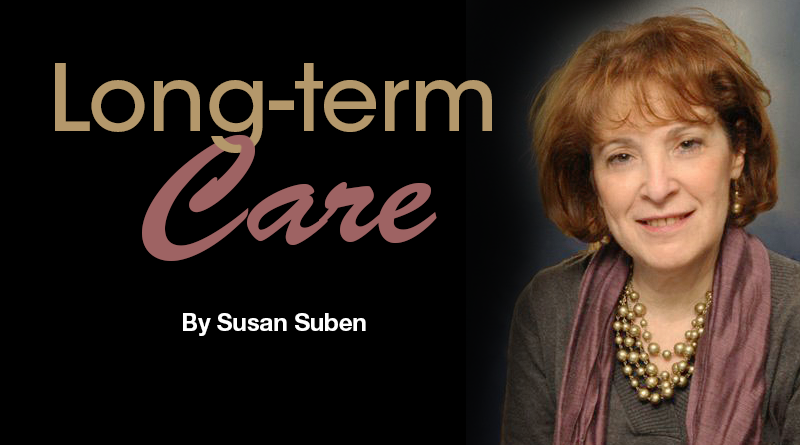The Nuances of Long Term Care Insurance
By Susan Suben
I have been helping individuals purchase long-term care insurance for almost 22 years. Many of my clients are on claim. The insurance benefits have been invaluable to them and their families financially, emotionally, physically and socially.
However, by helping them through the claims process, I have observed firsthand how the extent and acceptance of one’s disability and the selected policy features impact the ability to receive home care (HC) benefits.
I would like to share some of these observations with you so that you can understand the benefit triggers if you have a policy, and design a better policy if you are thinking of purchasing coverage.
The need for HC is the No. 1 reason why individuals go on claim. According to claims data, 40 percent of all new claims are for home care.
When long-term care insurance — or LTCI — was first introduced, the triggers to receive HC benefits were the inability to perform two out of six activities of daily living (ADLs): bathing, dressing, eating, toileting, continence and transferring; or a cognitive impairment or a medical necessity. When the policies became tax-qualified, the medical necessity trigger was eliminated. This meant that individuals who required assistance due to a medical condition and were frail, not necessarily disabled, could no longer initiate their HC benefits.
Frailty does not trigger benefits with any LTCI policy. The only way to receive HC benefits besides having a cognitive impairment is to be unable to do two out of six ADLs that require hands-on or stand-by assistance.
Several of my clients are frail and need help with instrumental activities of daily living (IADLs) such as laundry, cooking, transportation, cleaning, etc. In addition, they struggle with their ADLs but are often too proud and independent to rely on others. Their quality of life has diminished but not enough for them to reach out for help.
One of my clients is on 24/7 oxygen due to congestive heart failure and needs hands-on assistance to get out of her chair and walk as well as to put on her shoes, yet she will not allow herself to be cared for. She fights the idea of being dependent on others. She pays out-of-pocket for someone to come in three times per week to help with her IADLs. Yet, if she were to accept the need for help with her ADLs, she would receive ample assistance for both her ADLs and her IADLs, making life much easier for her.
If you have a LTCI policy, accept the fact that you need help with your ADLs if you are indeed struggling every day. Don’t deny yourself the support. Talk to your doctor. Develop a plan of care and file a claim. You purchased your policy so you and your family would feel less stressed and more in control. You are not in control when everything you do is an effort.
If you are thinking of purchasing LTCI, a policy feature that affects your ability to access HC benefits is the elimination period (EP). The EP is the amount of time that you pay out-of-pocket before the policy starts to pay benefits. EPs can be based on service or calendar days.
If your EP is based on service days, for every day you receive HC, you satisfy one day of credit toward your EP. If you have a calendar day EP, every day is counted toward the satisfaction of the EP even if you do not receive care.
Most individuals select a 90- or 100-day EP to save premium dollars. If you are purchasing LTCI to specifically stay home, satisfying a service day EP can take much longer if you are not receiving HC every day. When designing a policy, seriously consider selecting a calendar day EP. I have seen some of my clients wait upwards of six months to receive policy paid HC benefits with a service day EP.
Lastly, if you want to gear a policy towards HC, consider including the first day waiver of the EP for home care rider. You can still have a 90- or 100-day EP to keep the premium down for facility care but the rider will give you access to your HC benefits immediately and for every day you receive HC, you will get a day of credit toward your facility EP. For example, if you have a 90-day EP and receive HC for 90 days and then enter a facility, you will not have to pay anything out-of-pocket.
As with any insurance, the value and understanding of the coverage only comes to light when you go on claim. Purchasing LTCI to protect your family and yourself is a responsible decision. Knowing the ins and outs of LTCI when an illness occurs, or when you are designing a policy, puts you in a better position during the claims process.
Susan Suben, MS, CSA, is president of Long Term Care Associates, Inc. and Elder Care Planning, and a consultant for Canandaigua National Bank & Trust Company. She can be reached at 800-422-2655 or by email at susansuben@31greenbush.com.

